- Home
- Terry Pratchett
The Science of Discworld Revised Edition Page 4
The Science of Discworld Revised Edition Read online
Page 4
From such beginnings, an alternative explanation of the universe came into being. It didn’t involve gods, at least directly, so it didn’t find much favour with the priestly class. Some of their descendants are still trying to stamp it out, even today. The traditional priesthoods (who then and now often included some very intelligent people) eventually worked out an accommodation with this godless way of thinking, but it’s still not popular with postmodernists, creationists, tabloid astrologers and others who prefer the answers you can make up for yourself at home.
The current name for what has variously been called ‘heresy’ and ‘natural philosophy’ is, of course, ‘science’.
Science has developed a very strange view of the universe. It thinks that the universe runs on rules. Rules that never get broken. Rules that leave little room for the whims of gods.
This emphasis on rules presents science with a daunting task. It has to explain how a lot of flaming gas and rocks Up There, obeying simple rules like ‘big things attract small things, and while small things also attract big things they don’t do it strongly enough so as you’d notice’, can have any chance whatsoever of giving rise to Down Here. Down Here, rigid obedience to rules seems notably absent. One day you go out hunting and catch a dozen gazelles; next day a lion catches you. Down Here the most evident rule seems to be ‘There are no rules’, apart perhaps from the one that could be expressed scientifically as ‘Excreta Occurs’. As the Harvard Law of Animal Behaviour puts it: ‘Experimental animals, under carefully controlled laboratory conditions, do what they damned well please.’ Not only animals: every golfer knows that something as simple as a hard, bouncy sphere with a pattern of tiny dots on it never does what it’s supposed to do. And as for the weather …
Science has now divided into two big areas: the life sciences, which tell us about living creatures, and the physical sciences, which tell us about everything else. Historically, ‘divides’ is definitely the word – the scientific styles of these two big divisions have about as much in common as chalk and cheese. Indeed, chalk is a rock and so clearly belongs to the geological sciences, whereas cheese, formed by bacterial action on the bodily fluids of cows, belongs to the biological sciences. Both divisions are definitely science, with the same emphasis on the role of experiments in testing theories, but their habitual thought patterns run along different lines.
At least, until now.
As the third millennium approaches, more and more aspects of science are straddling the disciplines. Chalk, for instance, is more than just a rock: it is the remains of shells and skeletons of millions of tiny ocean-living creatures. And making cheese relies on chemistry and sensor technology as much as it does on the biology of grass and cows.
The original reason for this major bifurcation in science was a strong perception that life and non-life are extremely different. Non-life is simple and follows mathematical rules; life is complex and follows no rules whatsoever. As we said, Down Here looks very different from Up There.
However, the more we pursue the implications of mathematical rules, the more flexible a rule-based universe begins to seem. Conversely, the more we understand biology, the more important its physical aspects become – because life isn’t a special kind of matter, so it too must obey the rules of physics. What looked like a vast, unbridgeable gulf between the life sciences and the physical sciences is shrinking so fast that it’s turning out to be little more than a thin line scratched in the sand of the scientific desert.
If we are to step across that line, though, we need to revise the way we think. It’s all too easy to fall back on old – and inappropriate – habits. To illustrate the point, and to set up a running theme for this book, let’s see what the engineering problems of getting to the Moon tell us about how living creatures work.
The main obstacle to getting a human being on to the Moon is not distance, but gravity. You could walk to the Moon in about thirty years – given a path, air, and the usual appurtenances of the experienced traveller – were it not for the fact that it’s uphill most of the way. It takes energy to lift a person from the surface of the planet to the neutral point where the Moon’s pull cancels out the Earth’s. Physics provides a definite lower limit for the energy you must expend – it’s the difference between the ‘potential energy’ of a mass placed at the neutral point and the potential energy of the same mass placed on the ground. The Law of Conservation of Energy says that you can’t do the job with less energy, however clever you are.
You can’t beat physics.
This is what makes space exploration so expensive. It takes a lot of fuel to lift one person into space by rocket, and to make matters worse, you need more fuel to lift the rocket … and more fuel to lift the fuel … and … At any rate, it seems that we’re stuck at the bottom of the Earth’s gravity well, and the ticket out has to cost a fortune.
Are we, though?
At various times, similar calculations have been applied to living creatures, with bizarre results. It has been ‘proved’ that kangaroos can’t jump, bees can’t fly, and birds can’t get enough energy from their food to power their search for the food in the first place. It has even been ‘proved’ that life is impossible because living systems become more and more ordered, whereas physics implies that all systems become more and more disordered. The main message that biologists have derived from these exercises has been a deep scepticism about the relevance of physics to biology, and a comfortable feeling of superiority, because life is clearly much more interesting than physics.
The correct message is very different: be careful what tacit assumptions you make when you do that kind of calculation. Take that kangaroo, for instance. You can work out how much energy a kangaroo uses when it makes a jump, count how many jumps it makes in a day, and deduce a lower limit on its daily energy requirements. During a jump, the kangaroo leaves the ground, rises, and drops back down again, so the calculation is just like that for a space rocket. Do the sums, and you find that the kangaroo’s daily energy requirement is about ten times as big as anything it can get from its food. Conclusion: kangaroos can’t jump. Since they can’t jump, they can’t find food, so they’re all dead.
Strangely, Australia is positively teeming with kangaroos, who fortunately cannot do physics.
What’s the mistake? The calculation models a kangaroo as if it were a sack of potatoes. Instead of a thousand kangaroo leaps per day (say), it works out the energy required to lift a sack of potatoes off the ground and drop it back down, 1000 times. But if you look at a slow-motion film of a kangaroo bounding across the Australian outback, it doesn’t look like a sack of potatoes. A kangaroo bounces, lolloping along like a huge rubber spring. As its legs go up, its head and tail go down, storing energy in its muscles. Then, as the feet hit the ground, that energy is released to trigger the next leap. Because most of the energy is borrowed and paid back, the energy cost per leap is tiny.
Here’s an association test for you. ‘Sack of potatoes’ is to ‘kangaroo’ as ‘rocket’ is to – what? One possible answer is a space elevator. In the October 1945 issue of Wireless World the science-fiction writer Arthur C. Clarke invented the concept of a geostationary orbit, now the basis of virtually all communications satellites. At a particular height – about 22,000 miles (35,000 km) above the ground – a satellite will go round the Earth exactly in synchrony with the Earth’s rotation. So from the ground it will look as though the satellite isn’t moving. This is useful for communications: you can point your satellite dish in a fixed direction and always get coherent, intelligent signals or, failing that, MTV.
Nearly thirty years later Clarke popularized a concept with far greater potential for technological change. Put up a satellite in geostationary orbit and drop a long cable down to the ground. It has to be an amazingly strong cable: we don’t yet have the technology but ‘carbon nanotubes’ now being created in the laboratory come close. If you get the engineering right, you can build an elevator 22,000 miles high. The cost would be
enormous, but you could then haul stuff into space just by pulling on the cable from above.
Ah, but you can’t beat physics. The energy required would be exactly the same as if you used a rocket.
Of course. Just as the energy required to lift a kangaroo is exactly the same as that required to lift a sack of potatoes.
The trick is to find a way to borrow energy and pay it back. The point is that once the space elevator is in place, after a while there’s just as much stuff coming down it as there is going up. Indeed, if you’re mining the Moon or the asteroids for metals, there will soon be more stuff coming down than goes up. The materials going down provide the lifting energy for those going up. Unlike a rocket, which gets used up every time you fire it, a space elevator is self-sustaining.
Life is like a space elevator. What life self-sustains is not energy, but organization. Once you have a system that is so highly organized that it can reliably make copies of itself, that degree of organization is no longer ‘expensive’. The initial investment may have been huge, as for a space elevator, but once the investment has been made, everything else is free.
If you want to understand biology, it is the physics of space elevators that you need, not the physics of rockets.
How can Discworld’s magic illuminate Roundworld’s science? Just as the gulf between the physical and biological sciences is turning out to be far narrower than we used to think, so the gulf between science and magic is also becoming smaller. The more advanced our technologies become, the less possible it is for the everyday user to have any idea of how they work. As a result, they look more and more like magic. As Clarke realized, this tendency is inevitable; Gregory Benford went further and declared it desirable.
Technology works because whoever built it in the first place figured out enough of the rules of the universe to make the technology do what was required of it. You don’t need to get the rules right to do this, just right enough – space rockets work fine even though their orbits are computed using Newton’s stab at the rules of gravity, which aren’t as accurate as Einstein’s. But what you can accomplish is severely constrained by what the universe will permit. With magic, in contrast, things work because people want them to. You still have to find the right spell, but what drives the development is human wishes (and, of course, the knowledge, skill and experience of the practitioner). This is one reason why science often seems inhuman, because it looks at how the universe drives us, rather than the other way round.
Magic, however, is only one aspect of Discworld. There’s a lot of science on Discworld, too – or at least rational engineering. Balls get thrown and caught, the biology of the river Ankh resembles that of a typical terrestrial swamp or sewage farm, and light goes in more or less straight lines. Very slowly, though. As we read in The Light Fantastic: ‘Another Disc day dawned, but very gradually, and this is why. When light encounters a strong magical field it loses all sense of urgency. It slows right down. And on the Discworld the magic was embarrassingly strong, which meant that the soft yellow light of dawn flowed over the sleeping landscape like the caress of a gentle lover or, as some, would have it, like golden syrup.’ The same quote tells us that as well as rational engineering there’s a lot of magic in Discworld: overt magic which slows light down; magic that allows the sun to orbit the world provided that occasionally one of the elephants lifts its leg to let the sun pass. The sun is small, nearby, and travels faster than its own light. This appears to cause no major problems.
There is magic in our world, too, but of a different, less obvious kind. It happens around everybody all the time, in all those little causalities which we don’t understand but just accept. When we turn the switch and the light comes on. When we get into the car and start the engine. When we do all those improbable and ridiculous things that, thanks to biological causality, make babies. Certainly many people understand, often to quite a detailed degree, what is going on in particular areas – but sooner or later we all reach our Magical Event Horizon. Clarke’s Law states that any sufficiently advanced technology looks like magic ‘Advanced’ here is usually taken to mean ‘shown to us by advanced aliens or people from the future’, like television shown to Neanderthals. But we should realize that television is magic to nearly everyone that uses it now – to those behind the camera as well as to those sitting on the couch in front of the moving picture in the funny box. At some point in the process, in the words of cartoonist S. Harris, ‘a miracle occurs’.
Science takes on the aura of magic because the design of a civilization proceeds by a type of narrative imperative – it makes a coherent story. In about 1970, Jack gave a lecture to a school audience on ‘The Possibility of Life on Other Planets’2. He talked about evolution, what planets were made of – all the things that you’d expect in such a lecture. The first question was from a girl of about 15, who asked ‘You believe in evolution, don’t you, sir?’ The teacher went on about it not being a ‘proper’ question, but Jack answered it anyway, saying – rather pretentiously –‘No, I don’t believe in evolution, like people believe in God … Science and technology are not advanced by people who believe, but by people who don’t know but are doing their best to find out … steam engine … spinning jenny … television …’ At that, she was on her feet again: ‘No, that ain’t how television was invented!’ The teacher tried to calm the discussion by asking her to explain how she thought television was invented. ‘My father works for Fisher Ludlow making pressed steel for car bodies. He gets paid and he gives some of the money to the government to give him things. So he tells the government he wants to watch television, and they pay someone to invent television, and they do!’
It’s very easy to make this mistake, because technology progresses by pursuing goals. We get the feeling that if we pour in enough resources, we can achieve anything. Not so. Pour in enough resources, and we can achieve anything that is within reach of current know-how, or possibly just a bit beyond if we’re lucky. But nobody tells us about the inventions that fail. Nobody tries to raise funding for a project that they know can’t possibly work. No funding body will pay for research projects in which we have no idea where to start. We could pour as much money as we liked into developing antigravity or faster-than-light travel, and we’d get nowhere.
When you can take a machine to bits and see how it works, you get a clear feeling for the constraints within which it has to operate. In such cases, you’re not going to confuse science and magic. The first cars required an extremely hands-on starting system – you stuck a big handle into the engine and literally ‘turned it over’. Whatever the engine did when it started, you knew it wasn’t magic. However, as technology develops it usually doesn’t remain transparent to the user. As more people began to use cars, more and more of the obvious technology was replaced by symbols. You worked switches with labels to get things to happen. That’s our version of the magic spell: you pull a knob called Cold Start and the engine does all the cold start things for itself. When Granny wants to drive she does not have to do much more than push the accelerator for ‘Go’. Little imps do the rest, by magic.
This process is the core of the relation between science and magic in our own world. The universe into which we were born, and in which our species evolved, runs by rules – and science is our way of trying to work out what the rules are. But the universe that we are now constructing for ourselves is one that, to anyone other than a member of the design team and very possibly even to them, works by magic.
A special kind of magic is one of the many things that have made humans what they are. It’s called education. It’s how we pass on ideas from one generation to the next. If we were like computers, we’d be able to copy our minds into our children, so that they would grow up agreeing with every opinion that we hold dear. Well, actually they wouldn’t, though they might start out that way. There is an aspect of education that we want to draw to your attention. We call it ‘lies-to-children’. We’re aware that some readers may object to the word ‘lie
’ – it got Ian and Jack into terrible trouble with some literally-minded Swedes at a scientific conference who took it all terribly seriously and spent several days protesting that ‘It’s not a lie!’ It is. It is for the best possible reasons, but it is still a lie. A lie-to-children is a statement that is false, but which nevertheless leads the child’s mind towards a more accurate explanation, one that the child will only be able to appreciate if it has been primed with the lie.
The early stages of education have to include a lot of lies-to-children, because early explanations have to be simple. However, we live in a complex world, and lies-to-children must eventually be replaced by more complex stories if they are not to become delayed-action genuine lies. Unfortunately, what most of us know about science consists of vaguely remembered lies-to-children. For example, the rainbow. We all remember being told at school that glass and water split light into its constituent colours – there’s even a nice experiment where you can see them – and we were told that this is how rainbows form, from light passing through raindrops. When we were children, it never occurred to us that while this explains the colours of the rainbow it doesn’t explain its shape. Neither does it explain how the light from the many different raindrops in a thundershower somehow combines to create a bright arc. Why doesn’t it all smudge out? This is not the place to tell you about the elegant geometry of the rainbow – but you can see why ‘lie’ is not such a strong word after all. The school explanation diverts our attention from the real marvel of the rainbow, the cooperative effects of all the raindrops, by trying to pretend that once you’ve explained the colours, that’s it.
Other examples of lies-to-children are the idea that the Earth’s magnetic field is like a huge bar magnet with N and S marked on it, the picture of an atom as a miniature solar system, the idea that a living amoeba is a billion-year-old ‘primitive’ organism, the image of DNA as the blueprint for a living creature, and the connection between relativity and Einstein’s hairstyle (it’s the sort of crazy idea that only people with hair like that can come up with). Quantum mechanics lacks a public ‘icon’ of this kind – it doesn’t tell a simple story that a non-specialist can grab and hang on to – so we feel uncomfortable about it.

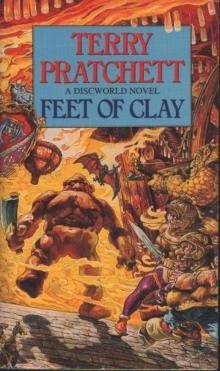 Feet of Clay
Feet of Clay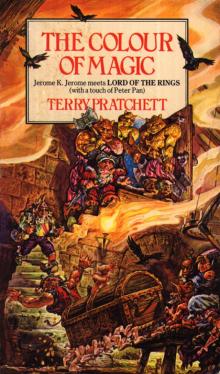 The Color of Magic
The Color of Magic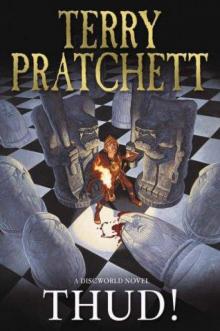 Thud!
Thud! Good Omens: The Nice and Accurate Prophecies of Agnes Nutter, Witch
Good Omens: The Nice and Accurate Prophecies of Agnes Nutter, Witch I Shall Wear Midnight
I Shall Wear Midnight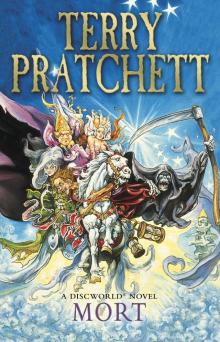 Mort
Mort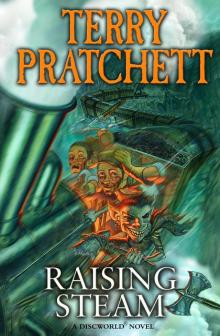 Raising Steam
Raising Steam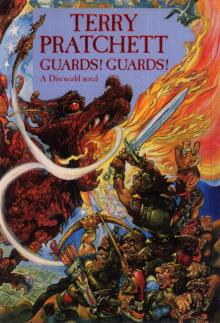 Guards! Guards!
Guards! Guards!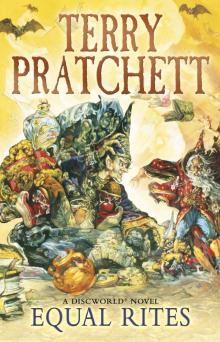 Equal Rites
Equal Rites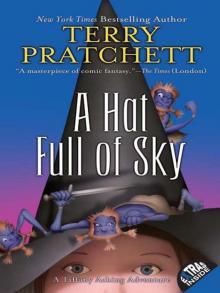 A Hat Full of Sky
A Hat Full of Sky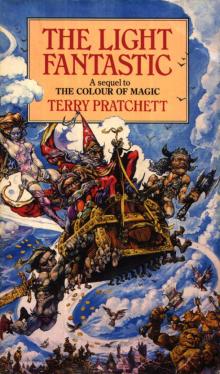 The Light Fantastic
The Light Fantastic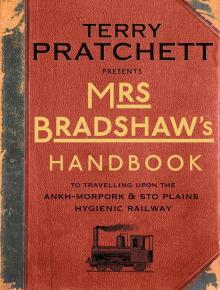 Mrs Bradshaw's Handbook
Mrs Bradshaw's Handbook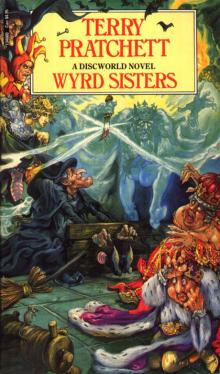 Wyrd Sisters
Wyrd Sisters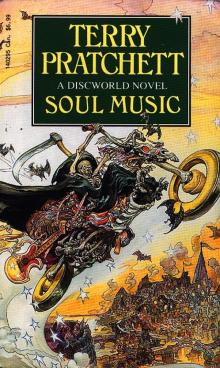 Soul Music
Soul Music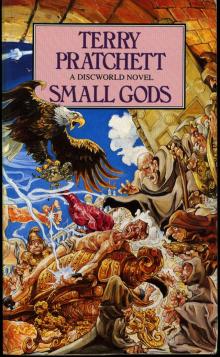 Small Gods
Small Gods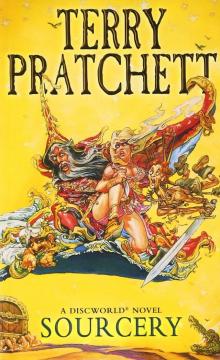 Sourcery
Sourcery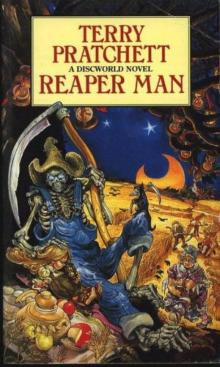 Reaper Man
Reaper Man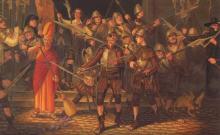 Night Watch
Night Watch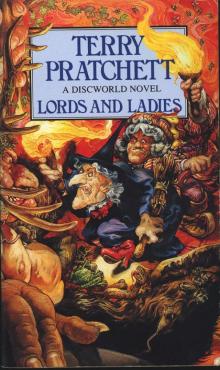 Lords and Ladies
Lords and Ladies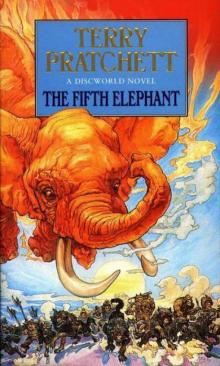 The Fifth Elephant
The Fifth Elephant Monstrous Regiment
Monstrous Regiment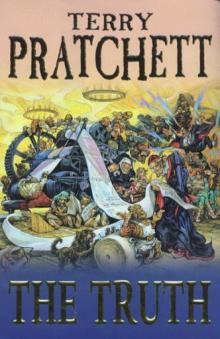 The Truth
The Truth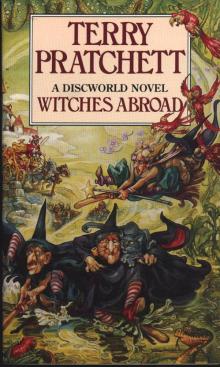 Witches Abroad
Witches Abroad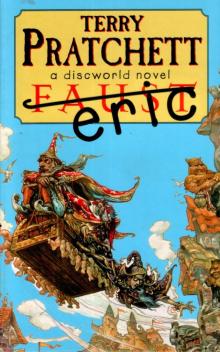 Eric
Eric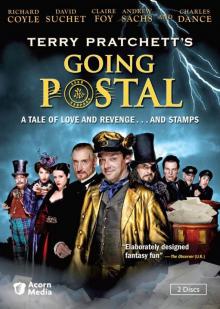 Going Postal
Going Postal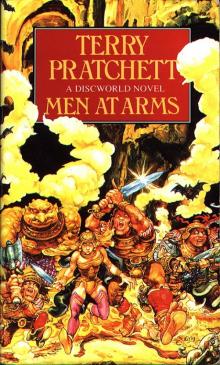 Men at Arms
Men at Arms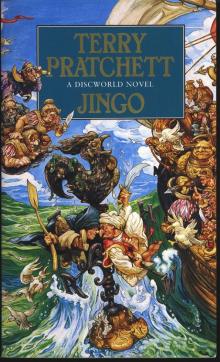 Jingo
Jingo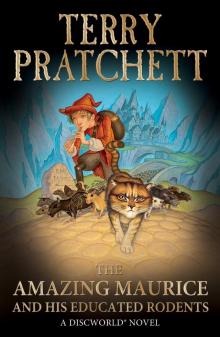 The Amazing Maurice and His Educated Rodents
The Amazing Maurice and His Educated Rodents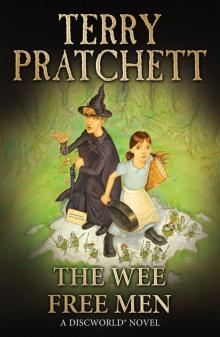 The Wee Free Men
The Wee Free Men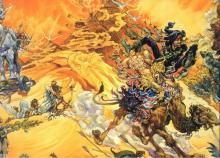 Pyramids
Pyramids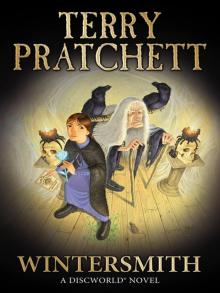 Wintersmith
Wintersmith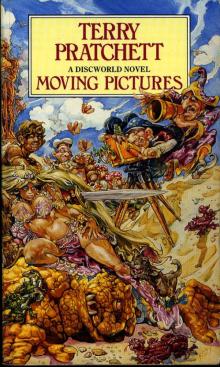 Moving Pictures
Moving Pictures Carpe Jugulum
Carpe Jugulum Interesting Times
Interesting Times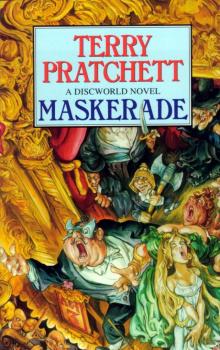 Maskerade
Maskerade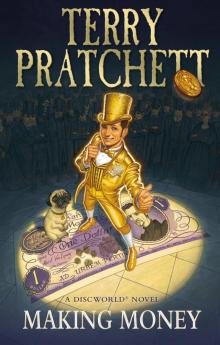 Making Money
Making Money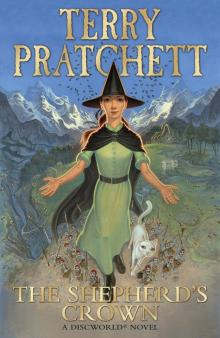 The Shepherd's Crown
The Shepherd's Crown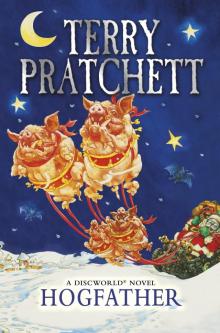 Hogfather
Hogfather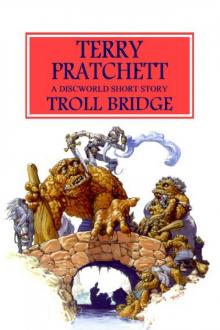 Troll Bridge
Troll Bridge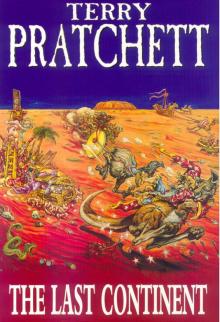 The Last Continent
The Last Continent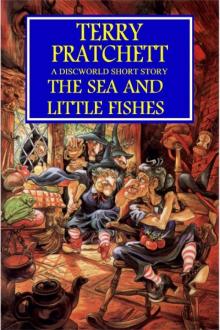 The Sea and Little Fishes
The Sea and Little Fishes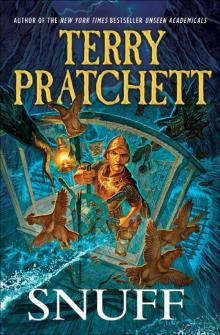 Snuff
Snuff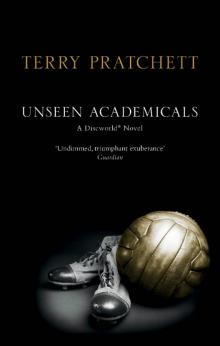 Unseen Academicals
Unseen Academicals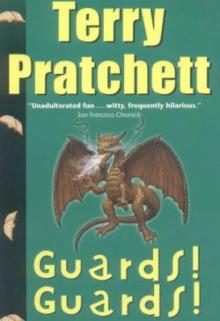 Guards! Guards! tds-8
Guards! Guards! tds-8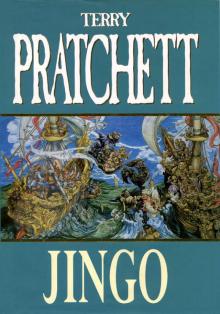 Jingo d-21
Jingo d-21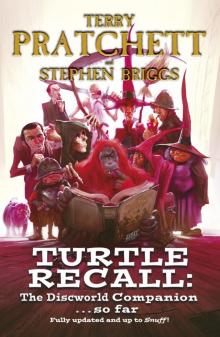 Turtle Recall: The Discworld Companion ... So Far
Turtle Recall: The Discworld Companion ... So Far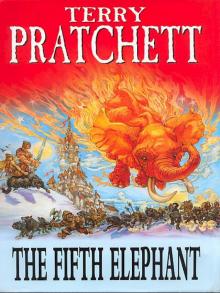 The Fifth Elephant d-24
The Fifth Elephant d-24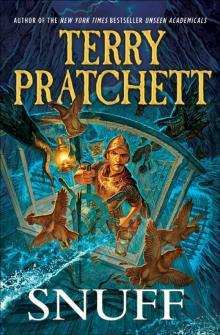 Discworld 39 - Snuff
Discworld 39 - Snuff The Long War
The Long War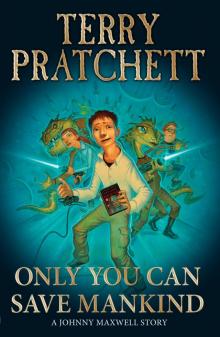 Only You Can Save Mankind
Only You Can Save Mankind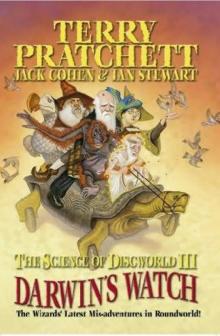 The Science of Discworld III - Darwin's Watch tsod-3
The Science of Discworld III - Darwin's Watch tsod-3 A Blink of the Screen: Collected Short Fiction
A Blink of the Screen: Collected Short Fiction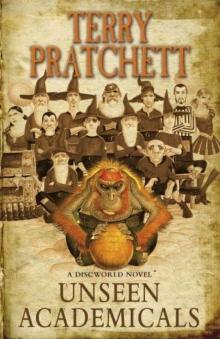 Unseen Academicals d-37
Unseen Academicals d-37 Wings
Wings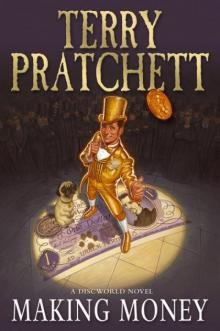 Making Money d-36
Making Money d-36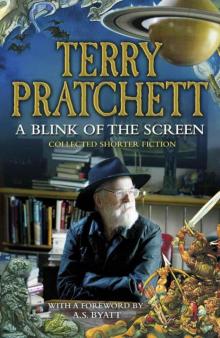 A Blink of the Screen
A Blink of the Screen Johnny and the Bomb
Johnny and the Bomb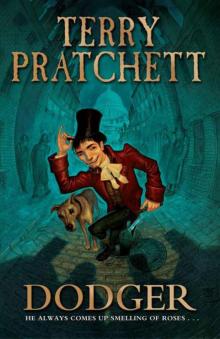 Dodger
Dodger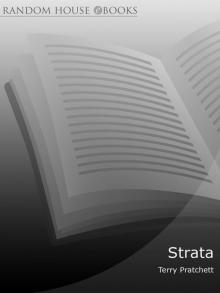 Strata
Strata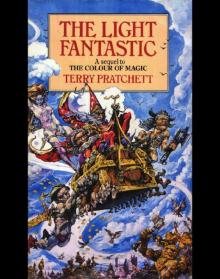 Discworld 02 - The Light Fantastic
Discworld 02 - The Light Fantastic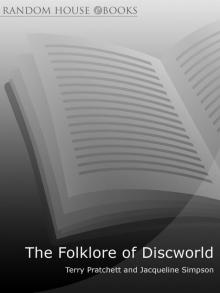 The Folklore of Discworld
The Folklore of Discworld The Science of Discworld
The Science of Discworld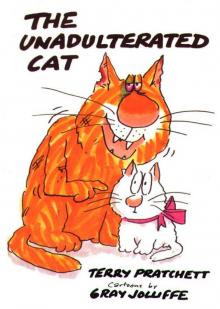 The Unadulterated Cat
The Unadulterated Cat Raising Steam: (Discworld novel 40) (Discworld Novels)
Raising Steam: (Discworld novel 40) (Discworld Novels)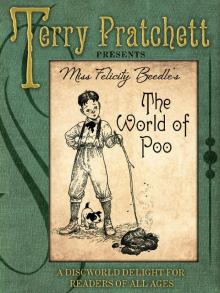 The World of Poo
The World of Poo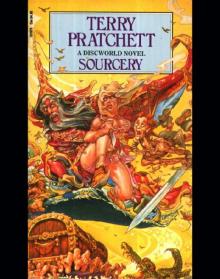 Discworld 05 - Sourcery
Discworld 05 - Sourcery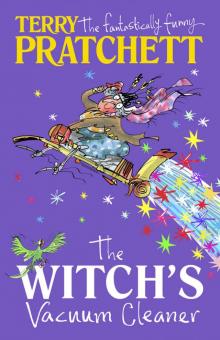 The Witch's Vacuum Cleaner: And Other Stories
The Witch's Vacuum Cleaner: And Other Stories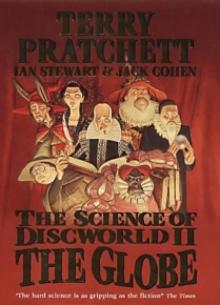 The Science of Discworld II - The Globe tsod-2
The Science of Discworld II - The Globe tsod-2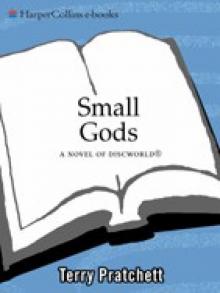 Small Gods: Discworld Novel, A
Small Gods: Discworld Novel, A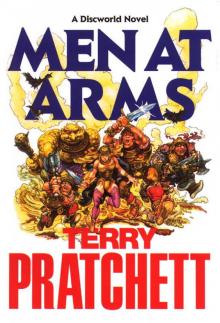 Men at Arms tds-15
Men at Arms tds-15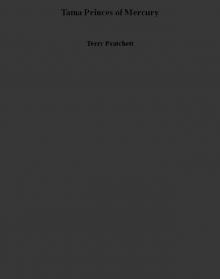 Tama Princes of Mercury
Tama Princes of Mercury The Last Hero (the discworld series)
The Last Hero (the discworld series)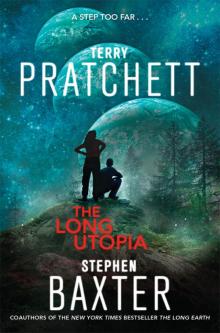 The Long Utopia
The Long Utopia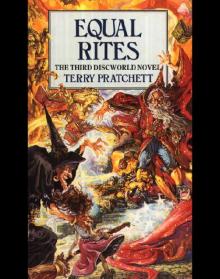 Discworld 03 - Equal Rites
Discworld 03 - Equal Rites Terry Pratchett - The Science of Discworld
Terry Pratchett - The Science of Discworld The Long Earth
The Long Earth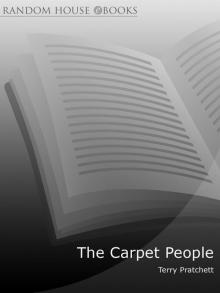 The Carpet People
The Carpet People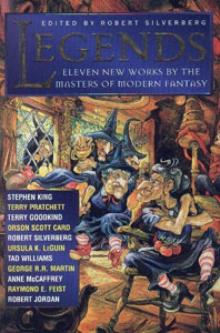 The Sea and Little Fishes (discworld)
The Sea and Little Fishes (discworld)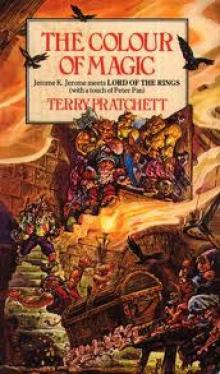 The Colour of Magic
The Colour of Magic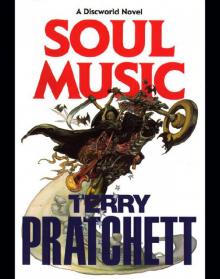 Discworld 16 - Soul Music
Discworld 16 - Soul Music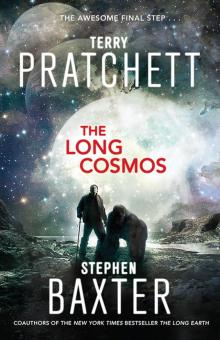 The Long Cosmos
The Long Cosmos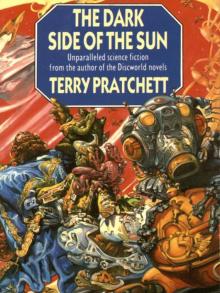 The Dark Side of the Sun
The Dark Side of the Sun Monstrous Regiment tds-28
Monstrous Regiment tds-28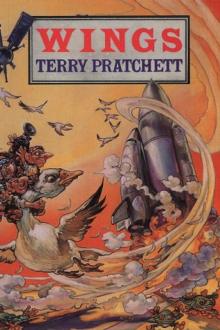 The Bromeliad 3 - Wings
The Bromeliad 3 - Wings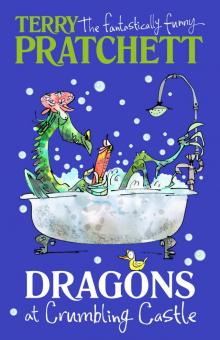 Dragons at Crumbling Castle: And Other Stories
Dragons at Crumbling Castle: And Other Stories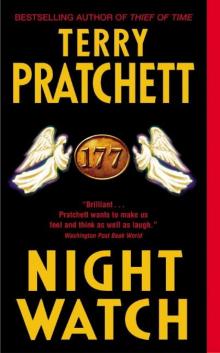 Night Watch tds-27
Night Watch tds-27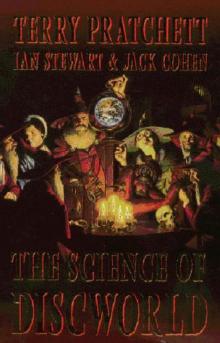 The Science of Discworld I tsod-1
The Science of Discworld I tsod-1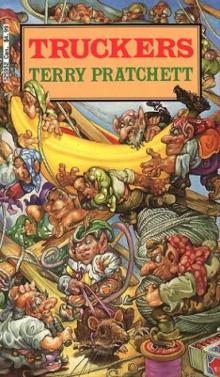 The Bromeliad 1 - Truckers
The Bromeliad 1 - Truckers The Science of Discworld Revised Edition
The Science of Discworld Revised Edition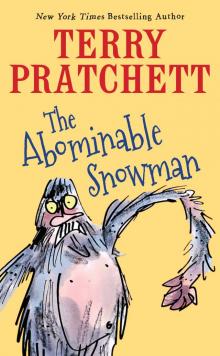 The Abominable Snowman
The Abominable Snowman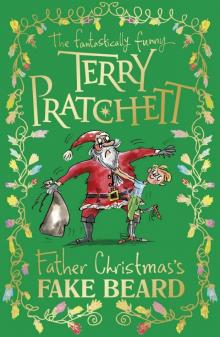 Father Christmas’s Fake Beard
Father Christmas’s Fake Beard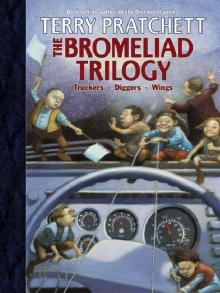 The Bromeliad Trilogy
The Bromeliad Trilogy A Slip of the Keyboard
A Slip of the Keyboard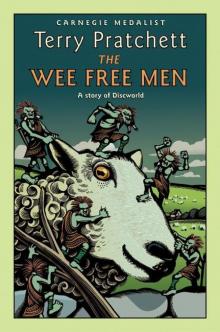 The Wee Free Men d(-2
The Wee Free Men d(-2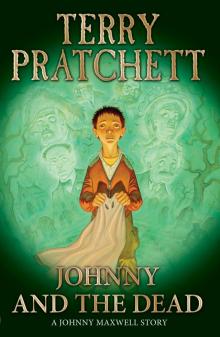 Johnny and the Dead
Johnny and the Dead Mrs Bradshaw's Handbook (Discworld Novels)
Mrs Bradshaw's Handbook (Discworld Novels)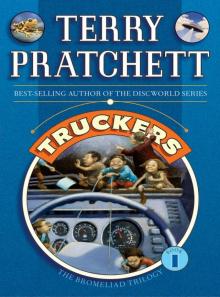 Truckers
Truckers The Amazing Maurice and His Educated Rodents d(-1
The Amazing Maurice and His Educated Rodents d(-1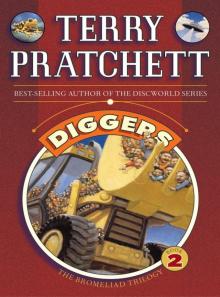 Diggers
Diggers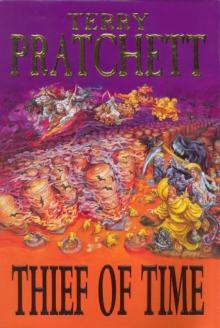 Thief of Time tds-26
Thief of Time tds-26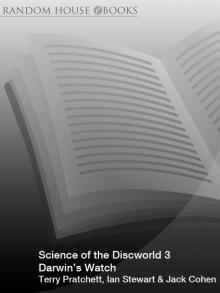 Science of Discworld III
Science of Discworld III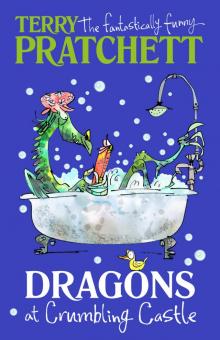 Dragons at Crumbling Castle
Dragons at Crumbling Castle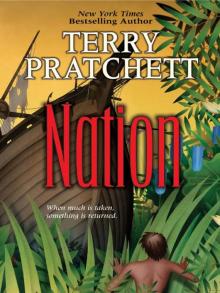 Nation
Nation Darwin's Watch
Darwin's Watch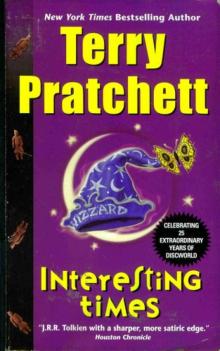 Interesting Times d-17
Interesting Times d-17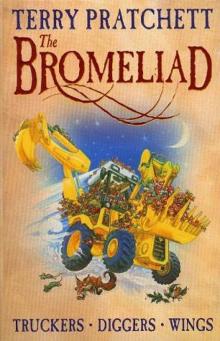 The Bromeliad 2 - Diggers
The Bromeliad 2 - Diggers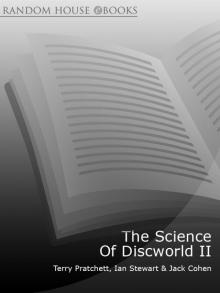 The Science of Discworld II
The Science of Discworld II